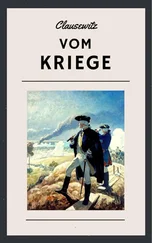Utaja, Chimiya, Chava, Vénu, Vamsa, Sátina, Kantaka, and Bhállúka, etc., form the group of bamboo.
Vetra (cane), sokavalli, vási (Justicia Ganderussa?), syámalatá (Ichnocarpus), nágalata (betel), etc., form the group of creepers.
Málati (Jasminum Grandiflorum), dúrvá (panic grass), arka (Calotropis Gigantea), sana (hemp), gavedhuka (Coix Barbata), atasí (Linum Usitatis simum), etc., form the group of fibrous plants (valkavarga).
Munja (Saccharum Munja), balbaja (Eleusine Indica), etc., are plants which yield rope-making material (rajjubhánda).
Táli (Corypha Taliera), tála (palmyra or Borassus Flabelliformis), and bhúrja (birch) yield leaves (patram).
Kimsuka (Butea Frondosa), kusumbha (Carthamus Tinctorius), and kumkuma (Crocus Sativus) yield flowers.
Bulbous roots and fruits are the group of medicines.
Kálakúta, Vatsanábha, Háláhala, Meshasringa, Mustá, (Cyperus Rotundus), kushtha, mahávisha, vellitaka, gaurárdra, bálaka, márkata, haimavata, kálingaka, daradaka, kolasáraka, ushtraka, etc., are poisons.
Likewise snakes and worms kept in pots are the group of poisons.
Skins are those of godha (alligator), seraka (?), dvípi (leopard), simsumára (porpoise), simha (lion), vyághra (tiger), hasti, (elephant.), mahisha (buffalo), chamara (bos grunniens), gomriga (bos gavaeus), and gavaya (the gayal).
Bones, bile (pittha), snáyu (?), teeth, horn, hoofs, and tails of the above animals as well as of other beasts, cattle, birds and snakes (vyála).
Káláyasa (iron), támra (copper), vritta (?), kámsya (bronze), sísa (lead), trapu (tin), vaikrintaka (mercury?), and árakuata (brass), are metals.
Utensils (bhanda), are those made of cane, bark (vidala), and clay (mrittiká).
Charcoal, bran, and ashes are other things.
Menageries of beasts, cattle, and birds.
Collection of firewood and fodder.
The superintendent of forest produce shall carry on either inside or outside (the capital city) the manufacture of all kinds of articles which are necessary for life or for the defence of forts.
[Thus ends Chapter XVII, “The Superintendent of Forest Produce” in Book II, “The Duties of Government Superintendents” of the Arthasástra of Kautilya. End of chapter thirty-eighth from the beginning.]
CHAPTER XVIII. THE SUPERINTENDENT OF THE ARMOURY.
Table of Contents
THE Superintendent of the Armoury shall employ experienced workmen of tried ability to manufacture in a given time and for fixed wages wheels, weapons, mail armour, and other accessory instruments for use in battles, in the construction or defence of forts, or in destroying the cities or strongholds of enemies.
All these weapons and instruments shall be kept in places suitably prepared for them. They shall not only be frequently dusted and transferred from one place to another, but also be exposed to the sun. Such weapons as are likely to be affected by heat and vapour (úshmopasneha) and to be eaten by worms shall be kept in safe localities. They shall also be examined now and then with reference to the class to which they belong, their forms, their characteristics, their size, their source, their value, and their total quantity.
Sarvatobhadra, jamadagnya, bahumukha, visvásagháti, samgháti, yánaka, parjanyaka, ardhabáhu, and úrdhvabáhu are immoveable machines (sthirayantrám).
Pánchálika, devadanda, súkarika, musala, yashti, hastiváraka, tálavrinta, mudgara, gada, spriktala, kuddála, ásphátima, audhghátima, sataghni, trisúla, and chakra are moveable machines.
Sakti, prása, kunta, hátaka, bhindivála, súla, tomara, varáhakarna, kanaya, karpana, trásika, and the like are weapons with edges like a ploughshare (halamukháni).
Bows made of tála (palmyra), of chápa (a kind of bamboo), of dáru (a kind of wood), and sringa (bone or horn) are respectively called kármuka, kodanda, druna, and dhanus.
Bow-strings are made of múrva (Sansviera Roxburghiana), arka (Catotropis Gigantea), sána (hemp), gavedhu (Coix Barbata), venu (bamboo bark), and snáyu (sinew).
Venu, sara, saláka, dandásana, and nárácha are different kinds of arrows. The edges of arrows shall be so made of iron, bone or wood as to cut, rend or pierce.
Nistrimsa, mandalágra, and asiyashti are swords. The handles of swords are made of the horn of rhinoceros, buffalo, of the tusk of elephants, of wood, or of the root of bamboo.
Parasu, kuthára, pattasa, khanitra, kuddála, chakra, and kándachchhedana are razor-like weapons.
Yantrapáshána, goshpanapáshána, mushtipáshána, rochaní (mill-stone), and stones are other weapons (áyudháni).
Lohajáliká, patta, kavacha, and sútraka are varieties of armour made of iron or of skins with hoofs and horns of porpoise, rhinoceros, bison, elephant or cow.
Likewise sirastrána (cover for the head), kanthatrána (cover for the neck) kúrpása (cover for the trunk), kanchuka (a coat extending as far as the knee joints), váravána (a coat extending as far as the heels), patta, (a coat without cover for the arms), and nágodariká (gloves) are varieties of armour.
Veti, charma, hastikarna, tálamúla, dharmanika, kaváta, kitika, apratihata, and valáhakánta are instruments used in self-defence (ávaranáni).
Ornaments for elephants, chariots, and horses as well as goads and hooks to lead them in battle-fields constitute accessory things (upakaranáni).
(Besides the above) such other delusive and destructive contrivances (as are treated of in Book XIV) together with any other new inventions of expert workmen (shall also be kept in stock.)
The Superintendent of Armoury shall precisely ascertain the demand and supply of weapons, their application, their wear and tear, as well as their decay and loss.
[Thus ends Chapter XVIII, “The Superintendent of the Armoury” in Book II, “The Duties of Government Superintendents,” of the Arthasástra of Kautilya. End of thirty-ninth chapter from the beginning.]
CHAPTER XIX. THE SUPERINTENDENT OF WEIGHTS AND MEASURES.
Table of Contents
THE Superintendent of Weights and Measures shall have the same manufactured. 10 seeds of másha (Phraseolus Radiatus) or 5 ,, gunja (Cabrus Precatorius) = 1 suvarna-másha. 16 máshas = 1 suvarna or karsha. 4 karshas = 1 pala. 88 white mustard seeds = 1 silver-másha. 16 silver mashas or 20 saibya seeds = 1 dharana. 20 grains of rice = 1 dharana of a diamond.
Ardha-másha (half a másha), one másha, two máshas, four máshas, eight máshas, one suvarna, two suvarnas, four suvarnas, eight suvarnas, ten suvarnas, twenty suvarnas, thirty suvarnas, forty suvarnas and one hundred suvarnas are different units of weights.
Similar series of weights shall also be made in dharanas.
Weights (pratimánáni) shall be made of iron or of stones available in the countries of Magadha and Mekala; or of such things as will neither contract when wetted, nor expand under the influence of heat.
Beginning with a lever of six angulas in length and of one pala in the weight of its metallic mass, there shall be made ten (different) balances with levers successively increasing by one pala in the weight of their metallic masses, and by eight angulas in their length. A scale-pan shall be attached to each of them on one or both sides.
A balance called samavrittá, with its lever 72-angulas long and weighing 53 palas in its metallic mass shall also be made. A scalepan of 5 palas in the weight of its metallic mass being attached to its edge, the horizontal position of the lever (samakarana) when weighing a karsha shall be marked (on that part of the lever where, held by a thread, it stands horizontal). To the left of that mark, symbols such as 1 pala, 12, 15 and 20 palas shall be marked. After that, each place of tens up to 100 shall be marked. In the place of Akshas, the sign of Nándi shall be marked.
Читать дальше












